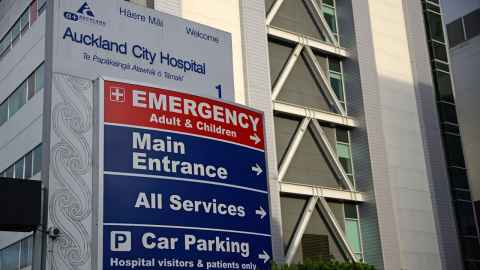Cluster spotlights need for more Pacific medics
2 September 2020
Opinion: The Auckland Covid-19 cluster has highlighted the "unacceptable" representation of Pasifika and Māori health workers in our system, writes Collin Tukuitonga.

Covid-19, and in particular the recent Auckland cluster that is affecting mainly Pacific and Māori, has shone a very bright light on the serious gaps of people from those communities working as public health doctors, GPs, nurses and others involved in delivering frontline health services.
It is generally recognised that the ethnic makeup of the health care workforce should reflect the community it serves. A diverse workforce is effective, efficient and culturally appropriate.
Sound understanding of Pacific cultures, languages and social circumstances is essential for health workers working for and with Pacific people. Furthermore, Pacific people report more favourable interactions with healthcare workers who speak their language.
But unfortunately, despite the large Pacific population that resides in Auckland and makes up 15 percent of the city’s population, enrolments by Pacific students into the medical programme at the University of Auckland has remained static at about seven percent since 2015.
This is unacceptable – the proportion of the health care workforce in the city should at the very least match this percentage.
Failure to improve enrolment figures for Pacific students contrasts markedly with medical school enrolments by Māori, which have increased dramatically during the same period. Similarly, enrolments for Pacific students into nursing, pharmacy, audiology and optometry in have also remained static since 2015. Incidentally, enrolments by Māori into nursing are consistently twice the rate of Pacific; enrolments in optometry are particularly low, at around two to three percent.
The trend for Māori broadly reflects the success of Whakapiki Ake, a recruitment programme set up by the University of Auckland to promote health careers to rangatahi Māori at high school. Whakapiki Ake provides information and support to Māori students and their whānau while they are still at school. And this is where support must start, in Year 9 and 10, because this is the age young people need to be making the right choices if they want a health career. They need to start working on the sciences and develop an understanding of what they are in for when they embark on tertiary study.
So while I am very impressed with what’s happening with the Māori students, I am concerned that the number of Pasifika students choosing medicine and health careers isn’t growing. We have to look at why this is and introduce similar measures that have worked for Māori – and with urgency.
Why, it may be asked, is this so important? It is important because the consensus among health care researchers globally is that compatibility and affinity between health care provider and health care user (the patient) leads to better health outcomes. And improved health outcomes are good for the patient, their whānau and our nation. They will reduce the inequities that have been part of our health care system for decades; inequities that are unfair, unjust and mostly preventable. In New Zealand, inequities mostly affect indigenous Māori and Pacific people and affect all aspects of the health care system; reducing them is a key priority for our health system.
New Zealand is well-served by two world-class medical schools in the Universities of Auckland and Otago. In 2017, the New Zealand Medical Council reported that Pacific and Māori doctors made up 1.8 percent and 3.6 percent of the total medical workforce of 15,819 respectively. While the numbers graduating from Auckland and Otago are increasing, particular from the Māori community, it is likely to be several decades before the New Zealand healthcare workforce approaches anywhere near the diversity that we seek unless additional measures are taken.
We need a dedicated programme of support similar to Whakapiki Ake, we need investment in additional places for Māori and Pacific students and we need to see more value for Pacific students from MAPAS, the Māori and Pacific Admission Scheme introduced by the university in 1972 to help students reach their health career goals. This has worked well for Māori, but not so much for Pacific.
But it’s not all to do with what happens here at the medical school. It’s also about what happens at home. There are Pacific families who want their daughter to succeed in medicine but she still has to teach Sunday school, cook food for their family, and look after the young ones — and these expectations aren’t realistic, not when the road to a health career can be gruelling and medical school can be a tough place to survive.
So a long process of support and information for students, for families and wider whānau is required. But with relevant information, dedicated support and a commitment that no Pacific student should be discouraged from pursuing a career in health, we can lift medical school enrolments from Pasifika to a level that reflects more truly the place of that community in a fairer, more equitable Aotearoa New Zealand.
Collin Tukuitonga is the inaugural Associate Dean Pacific at the University of Auckland Faculty of Medical and Health Sciences.
This article reflects the opinion of the author and not necessarily the views of the University of Auckland.
Used with permission from Newsroom Cluster spotlights need for more Pacific medics 2 September 2020.
Media queries
Alison Sims | Research Communications Editor
DDI 09 923 4953
Mob 021 249 0089
Email alison.sims@auckland.ac.nz